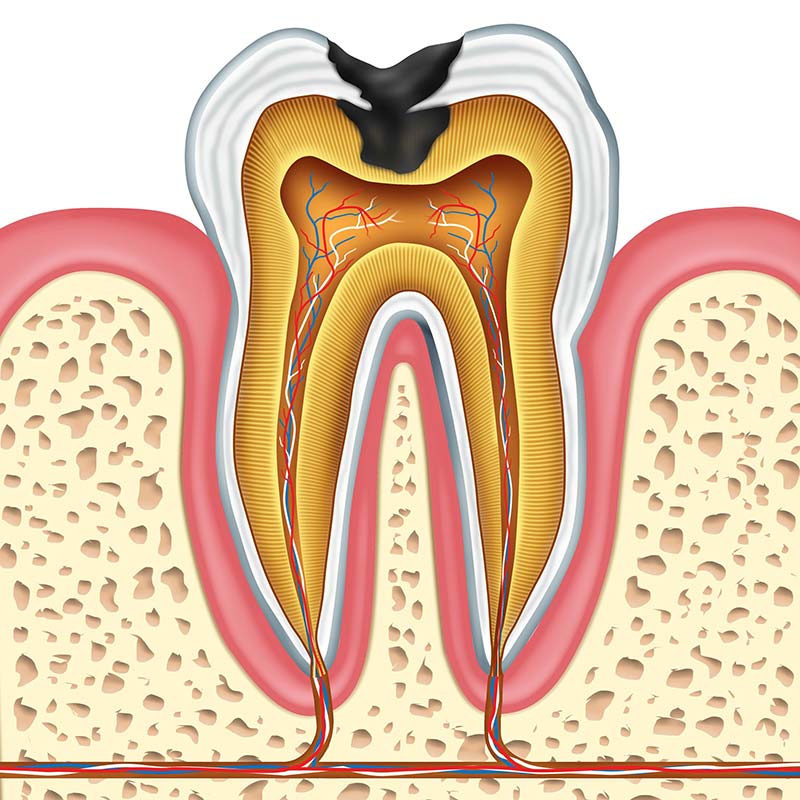Common Treatment Options for Cavities
Our practice offers some of the most advanced dental care procedures in Chicago, including treatments that enhance the beauty and overall wellness of a smile. Of course, the basics are just as important, which means we also maintain a focus on the everyday concerns of fighting tooth decay and gum disease.
A number of people have misconceptions about what cavities are and how dentists can fix them. Let's go over some of the basics of tooth decay and then list the most common treatments out there for cavities.
 What Is a Cavity?
What Is a Cavity?
A cavity refers to damage done to the structure of the teeth caused by the bacteria that naturally occur in the mouth. The bacteria feed on food particles caught on and between teeth, creating acidity that breaks down enamel. In the process, the bacteria also create a sticky substance known as plaque. This biofilm allows the bacteria to feed and remain in place, causing even more harm to the teeth.
It's always best to treat cavities as soon as they occur so patients can maintain as much of their natural tooth structure as possible. There are many different options for restoring a tooth as well as addressing the negative effects of extreme tooth decay.
Dental Fillings
A dental filling is a traditional restoration used to treat minor cavities. This small restoration can be made of metal or special tooth-colored acrylic materials. Fillings are rather common, and it's likely you have one or two in your mouth right now.
Inlays and Onlays
Inlays and onlays are larger restorations that are used to treat tooth decay when a dental filling alone is not enough to rebuild the damaged tooth structure. Inlays and onlays are able to restore the entire biting surface of a tooth (cusp). Like dental fillings, inlays and onlays come in metal or tooth-colored forms.
Dental Crowns
When a tooth is so damaged that inlays and onlays are no longer viable options, the last resort is a dental crown. Crowns are caps that are used to cover the remaining structure of a tooth. When a dental crown is in place, a tooth's general appearance is restored, pain is relieved, and a patient is able to bite and chew again without discomfort or major sensitivity. Dental crowns come in different forms including metal, ceramic, or metal with a porcelain coating.
Root Canal Therapy
When tooth decay is very serious, it can result in bacteria accessing the soft tissue within a tooth. When this dental pulp is infected, it's known as a root canal infection. They can be extremely painful, and if left untreated the infection can spread to other parts of the mouth. Root canal therapy is performed in order to remove the diseased dental pulp and cap the tooth.
Sometimes a Tooth Cannot Be Saved
There are some cases when a tooth is so decayed that saving the tooth, even with a dental crown, is no longer feasible. In these cases, it's necessary to extract the tooth. To replace the tooth, a dental bridge may be used. Some patients may want to consider a dental implant, which is an artificial tooth root that can support a crown.
Learn More About Treating Cavities
For more information about treating cavities and helping you have the healthiest smile possible, we encourage you to speak with an experienced cosmetic and restorative dentist today. Schedule a visit to our practice, or ask us a question. We look forward to interacting with you.
Also Consider Reading...
More General Dentistry Blog Posts
